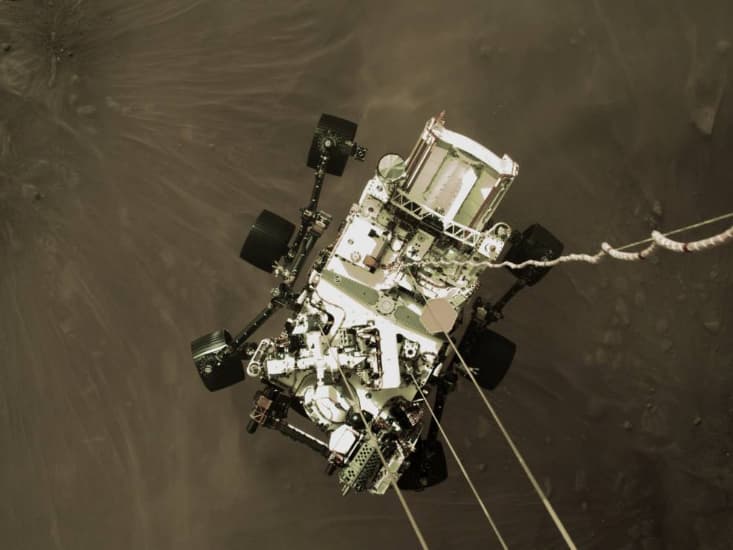NASA’s Perseverance rover has started to beam back images from Mars after it successfully landed on the Jezero Crater on Feb. 18.
On Friday, the US space agency released images captured by the cameras onboard the Perseverance, including a high-resolution image taken from the video footage of the landing.
“Perseverance’s cameras are intended to capture video of its touchdown and this new still image was taken from that footage, which is still being relayed to Earth and processed,” NASA said in its press release published on Friday.
Picks for you
The Hazard Cameras (Hazcams) onboard also captured images of the rover’s front and rear after touching down on the Martian surface.

Seeing colors in Mars
Perseverance has the most number of cameras a rover brought to Mars. It came with 25 cameras, albeit four of these were expected to fly away and crash with the landing hardware. What makes these cameras different from those carried by earlier Martian rovers is that many can see in color.

The Mastcam-Z cameras, zoomable science cameras on the rover’s head, can create high-resolution and three-dimensional panoramas of the Martian landscape. They were particularly designed to be tuned to the specific colors of the Red Planet.

“Earth color sensitivity isn’t very useful on Mars, where everything appears to be some shade of orange-brown. But the Mastcam-Z cameras can pick out subtle differences in oranges, reds, and near-infrared,” planetary scientists Emily Lakdawalla and Melissa Rice of the Mastcam-Z mission team explained. “These are the wavelengths in which Mars becomes vibrant. With Mastcam-Z, scientists can spot the rocks that are “ripe for the picking” at Jezero crater.”
The Perseverance mission
The mission’s primary objective is to conduct astrobiology research on Mars, searching for signs of ancient microbial life. Perseverance will also characterize the geology and past climate of the planet.
Perseverance is the first space mission to make an ambitious attempt to collect rock and regolith from Mars and return them to Earth.





